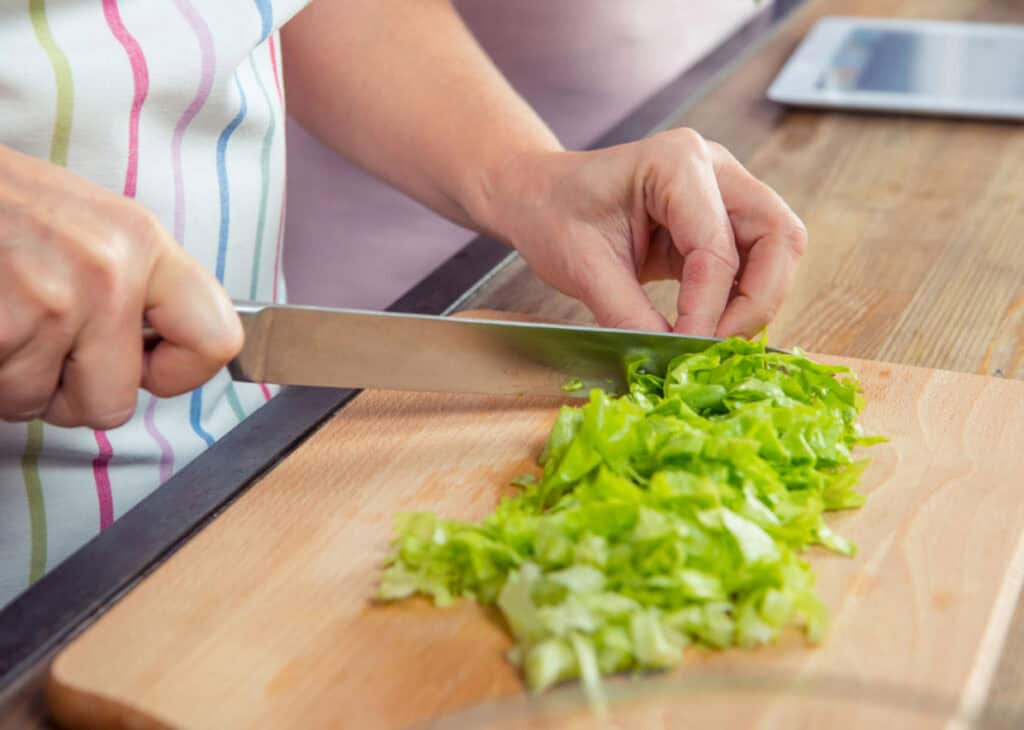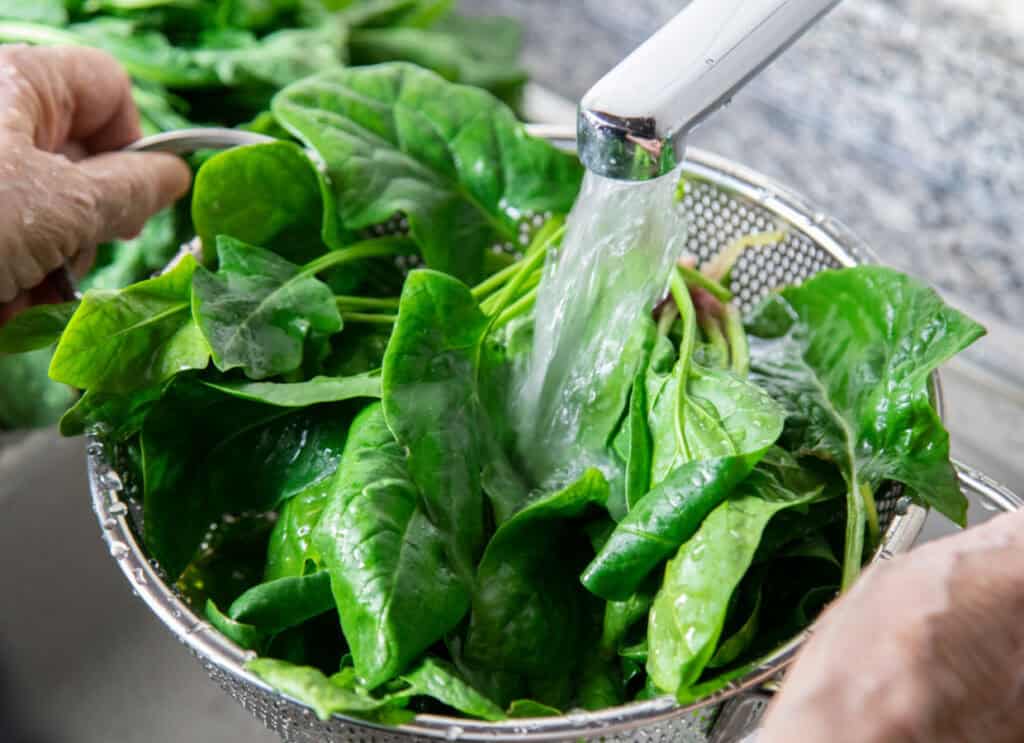Are you a salad lover who enjoys a bowl of crisp greens? Salad greens are more than just lettuce, and it’s time to explore the various types to create delicious, vibrant salads with plenty of colors and textures.

This article will guide you through choosing, storing and preparing salad greens like a pro. From selecting the freshest greens at the market to storing them properly for maximum shelf life and preparing them to enhance their flavor and texture, you’ll learn everything you need to make your salads delicious and impressive.
Choosing the best greens for a salad
By considering freshness, type, organic options, seasonal availability and how greens pair with other ingredients and your favorite salad dressing, you can select the best salad greens to create delicious and nutritious salads. Keep these pointers in mind when choosing greens.
Look for freshness
Pay attention to these key signs of freshness to get the best out of your salad greens.
- Crispness and color: Use firm, vibrant leaves without yellowing or browning.
- Smell: It should be clean and earthy, not sour.
- Moisture: Avoid greens with slimy spots.
Types of greens
Explore the variety of greens available to find the perfect match for your salads.
- Leafy greens: Romaine, iceberg and butterhead.
- Nutritious options: Spinach and kale.
- Peppery flavors: Arugula and watercress.
- Bitter greens: Endive, radicchio and frisée.
- Tender greens: Mâche and baby greens.
Organic vs. non-organic
Consider the benefits and tradeoffs between organic and non-organic greens.
- Organic: Grown without synthetic pesticides.
- Non-organic: More affordable but may have pesticide residues. Wash them thoroughly.
Seasonal availability
Understanding the seasonal availability of greens can help you select the freshest and most flavorful options.
- Local and seasonal: Best flavor and nutritional content.
- Year-round: Spinach, kale and lettuce.
Pairing with other ingredients
Knowing common leafy salad greens’ flavor profiles and textures can help you create a well-balanced salad.
- Balance flavors: Mix mild and robust greens.
- Match textures: Combine crunchy and tender greens.
- Complementary ingredients: Pair with suitable dressings, nuts, fruits or cheeses.
Common leafy salad greens
When selecting salad greens, it’s helpful to categorize them by their flavor profiles and textures. Some common leafy salad greens are divided into leafy, bitter and mild.

Leafy greens
Leafy greens vary in texture and flavor, offering a range of options for creating diverse and delicious salads.
- Butter lettuce, also known as Bibb or Boston lettuce, is known for its soft, tender leaves that form loose, round heads. It has a delicate, mild flavor and a slightly sweet taste.
- Iceberg lettuce is characterized by its crisp, pale green leaves and tight, compact head. Its mild flavor and high water content give it a refreshing crunch, perfect for a wedge salad.
- Leaf lettuce has two main varieties: red leaf and green leaf. Both types have loose, ruffled leaves that do not form a tight head.
- Romaine, or cos lettuce, has long, sturdy leaves with a thick central rib. It has a crisp texture and a slightly bitter yet refreshing taste.
Bitter greens
Bitter greens add a distinctive, robust flavor profile to salads.
- Arugula, also known as rocket, has dark green, serrated leaves with a distinct peppery flavor.
- Kale is a robust, leafy green with a slightly bitter and earthy flavor with curly or flat leaves.
Mild greens
Mild greens bring delicate flavors and varied textures to dishes.
- Spinach has tender, dark green leaves and a slightly sweet taste. It can be eaten raw or cooked and is packed with iron, fiber and vitamins A, C and K.
- Microgreens are young vegetable greens harvested just after the first true leaves have developed. They are more flavorful and nutritious than their mature counterparts.
- Napa cabbage, also known as Chinese cabbage, has long, light green leaves with white stalks. It has a mild, slightly sweet taste and a crunchy texture.
“As a daily salad eater, romaine lettuce is my top choice. I always use a salad spinner to clean the leaves thoroughly and spin them dry. This ensures the leaves stay crisp and crunchy, never soggy or limp.”
— Sharon Rhodes, The Honour System
Prepping salad greens like a pro
Properly prepping your salad greens ensures they are clean, crisp and ready to enjoy. Follow these steps to make sure your greens are at their best:
- Trim: Remove damaged or torn leaves, then trim long or hard stems.
- Wash and dry: Wash the leaves well in water, pat dry with paper towels or use a salad spinner.
- Slice or chop: Slice large pieces of greens into bite-sized pieces.

Storing salad greens
Nobody likes wilted greens. Learn the best tricks to keep your salad greens fresh in the fridge for over a week. The main thing is to keep your greens dry. The best way to do this is to store them by:
- Rolling up dried greens in several layers of paper towels and storing them in a plastic bag.
- Use a large storage container lined with paper towels. Lay the greens on top, add another layer of paper towels and seal the container. This method is also effective for storing strawberries and scallions.
- Swap out the paper towels if they get damp as you use the greens.
“It’s amazing how a piece of paper towel in a container of greens can extend their life. The towel absorbs excess moisture and keeps the leaves crisp.”
— Leah Ingram, Bagels and Lasagna
Mastering the art of choosing, storing and preparing salad greens can transform your salads from mundane to extraordinary. You can enjoy vibrant, delicious salads anytime by selecting the freshest greens that may have come from your garden, understanding their unique flavors and textures and storing them properly. With these tips, you’re on your way to becoming a salad pro.
Jere Cassidy is the writer and recipe developer behind the blog One Hot Oven. A passion for all things food-related led her to culinary school to expand her baking skills and now to share easy recipes for all home cooks and bakers of all skill levels. When not in the kitchen, Jere’ likes to travel far and wide to find delicious food.